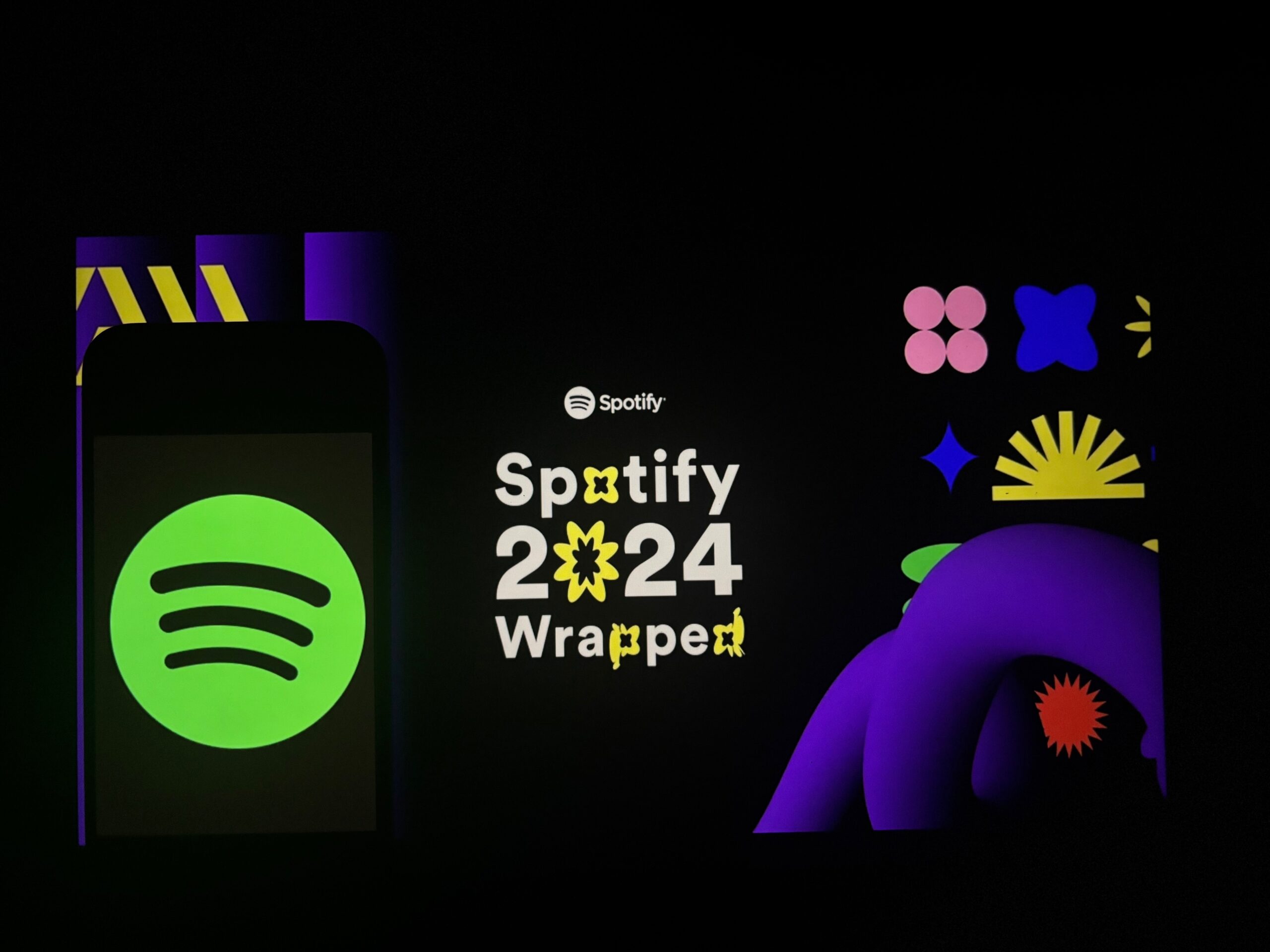
One of the most challenging aspects of being an innovator is staying ahead of the pack. Most ideas in the media and tech space can be copied and in many cases, improved upon by the competition. Nothing stays a secret for long, especially if it’s a popular concept.
Apple is a primary example of the fine art of besting first-movers. They didn’t invent the mp3 player or the smartphone. But they clearly came up with the best versions of these gadgets, even though they weren’t first in.
For the most competitive players in a space, it is difficult to stay ahead of the field, even when you’re the category leader. Spotify is a case in point. They recently released their new “Wrapped” package for 2024. This is where they compile, sort, categorize, and present user profiles of their platform usage using colorful charts and compelling metrics. More often than not, they tell you things about your musical listening habits that you didn’t know.
By actually showing you what you listened to, Spotify makes savvy use of their customers’ data. And “Wrapped” encourages social sharing, a savvy way to leverage even more brand awareness. From 2016 when this clever compilation feature launched, Spotify has enjoyed an edge over the other players in the music streaming arena.
We all have egos and unique taste patterns. Spotify plays right into our emotional fabric with “Wrapped,” a distorted fun mirror that somewhat reflects our online behavior and our music tastes, whether we are conscious of them or not.
My first blog post of this year – “Wrapping About Spotify” – studied these personal end-of-year wrap-ups, an ever-expanding list of brands trying to impress us with their ability to display our web entertainment habits in insightful ways. The more players in the field, the more pressure on the category leader – Spotify – to keep on innovating. How else do you stay on top?
I wrote the post almost exactly a year ago as we looked back at 2023. And last year’s version of “Wrapped” got me wondering about how popular these end-of-the-year statistical summaries really are.
In this year’s Techsurvey, we put it to the test. Narrowing our 30,000+ sample to monthly audio streamers, familiar with these end-of-year compilations, we learned this year these personal packages that reflect listening habits are exceptionally popular – especially among the youngest respondents in our survey:
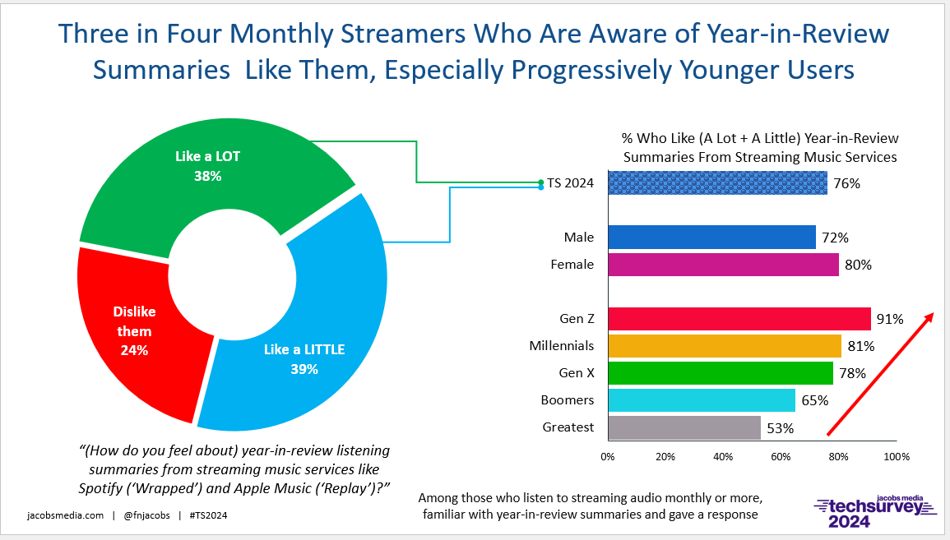
To retain their dominance, Spotify feels compelled to improve the interface, the features, the appearance, and the content of “Wrapped.” After all, how else do you justify regular price hikes? For an individual, for example, their monthly subscription fee is now about $12 – up another dollar from last year.
“Wrapped” is one of the perks of being a premium member. And it is a much anticipated feature of Spotify. In the earlier post back in January, I covered a number of other brands offering similar summaries of the year’s behavior – by the numbers. Especially given all these copycats, Spotify finds it necessary to try and improve upon the concept by offering new features and analytics – for better or worse.
As you might expect, the 2024 version of “Wrapped” definitely has new wrinkles – but the reviews, are at best, checkered. Not surprisingly, media critics are generally…critical.
One of these is the New Yorker’s Brady Brickner-Wood. “The Hollow Allure of Spotify Wrapped” makes the claim Spotify is more concerned about profits and ridding itself of competition rather than creating a revealing picture of its users’ musical tastes and consumption patterns.
No shock there, but Brickner-Wood notes feedback from the sharing of these summaries with friends and family members. As he reports, this year’s version of “Wrapped” “has been savaged by its own users for its uninspired presentation and a lack of personalization.”
In the New York Times, Kate Christobek similarly criticizes new features in “Wrapped,” including one called “Your Musical Evolution” that categorizes music listening with trendy labels such as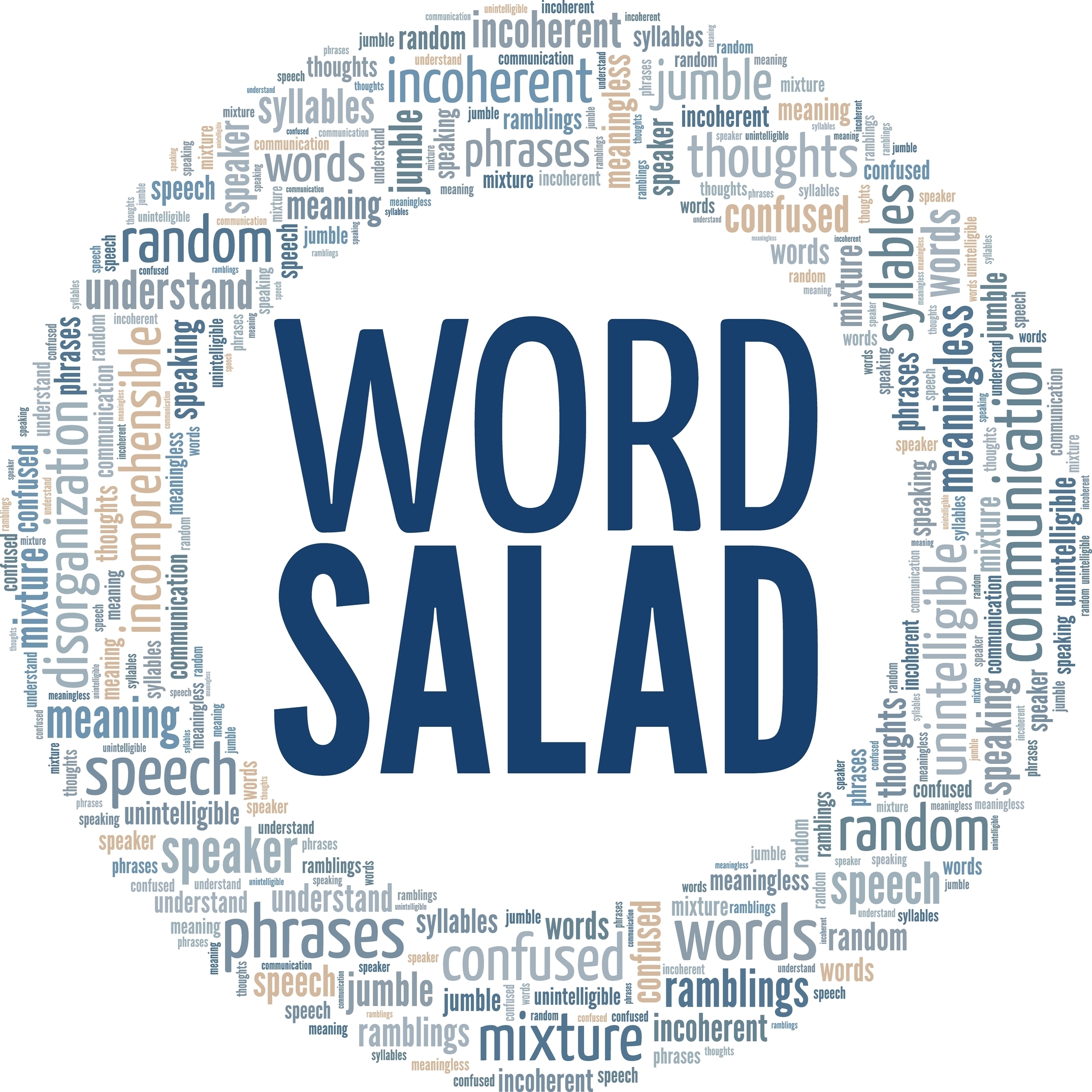 “Cinnamon Softcore Art Deco.”
“Cinnamon Softcore Art Deco.”
And then there’s the AI podcast feature, a new concept in this year’s “Wrapped” package. I’ll show you both of these new Spotify innovations later in this post.
Christobek makes the point that AI may have tainted the joy of this feature by creating features that read more like “word-salad-like summaries of…favorite genres.” Her “take” is that this year’s Spotify Wrapped “fell flat.” Others claim there were mistakes in the calculation of their music consumption leading to inaccuracies.
In my casual conversations with friends, family, and Jacobs Media/jacapps employees who received this year’s “Wrapped,” I find the more mature Spotify users tend to be a bit – shall we say – defensive about these summaries of their musical tastes, habits, escapes, and “guilty pleasures.” Many explained how other family members use their accounts, thus impacting Spotify’s algorithms, and thus, the end result of their “Wrapped” roundup.
Others told me how in certain months, they might have gone through a phase, a rare moment of music listening deviation from their norm. Apparently, the election may have caused some of these ripples in the Spotify “force” too, as some say they consumed music outside their normal taste confines.
Younger people, on the other hand, seem more apt to look at “Wrapped” as a fun tool loaded with insights about who they are and the musical soundtrack(s) of their lives. They also don’t take it too seriously. Unlike many of us who grew up with Rolling Stone telling us who was cool (and was not), Millennials and Gen Z’s are used to statistics, data, and charts that purport to explain their behavior. It’s natural, part of their lives, and “Spotify Wrapped” is just another analytical report about who they are and what they do, albeit interesting because it’s all about them and their music.
The “Your Musical Evolutions” feature seems to have elicited the most critical remarks, both on social media and among some of the people I talked to. Again, those odd characterizations of a musical moment in their lives seems to divide people and how they valued this year’s “Wrapped.”
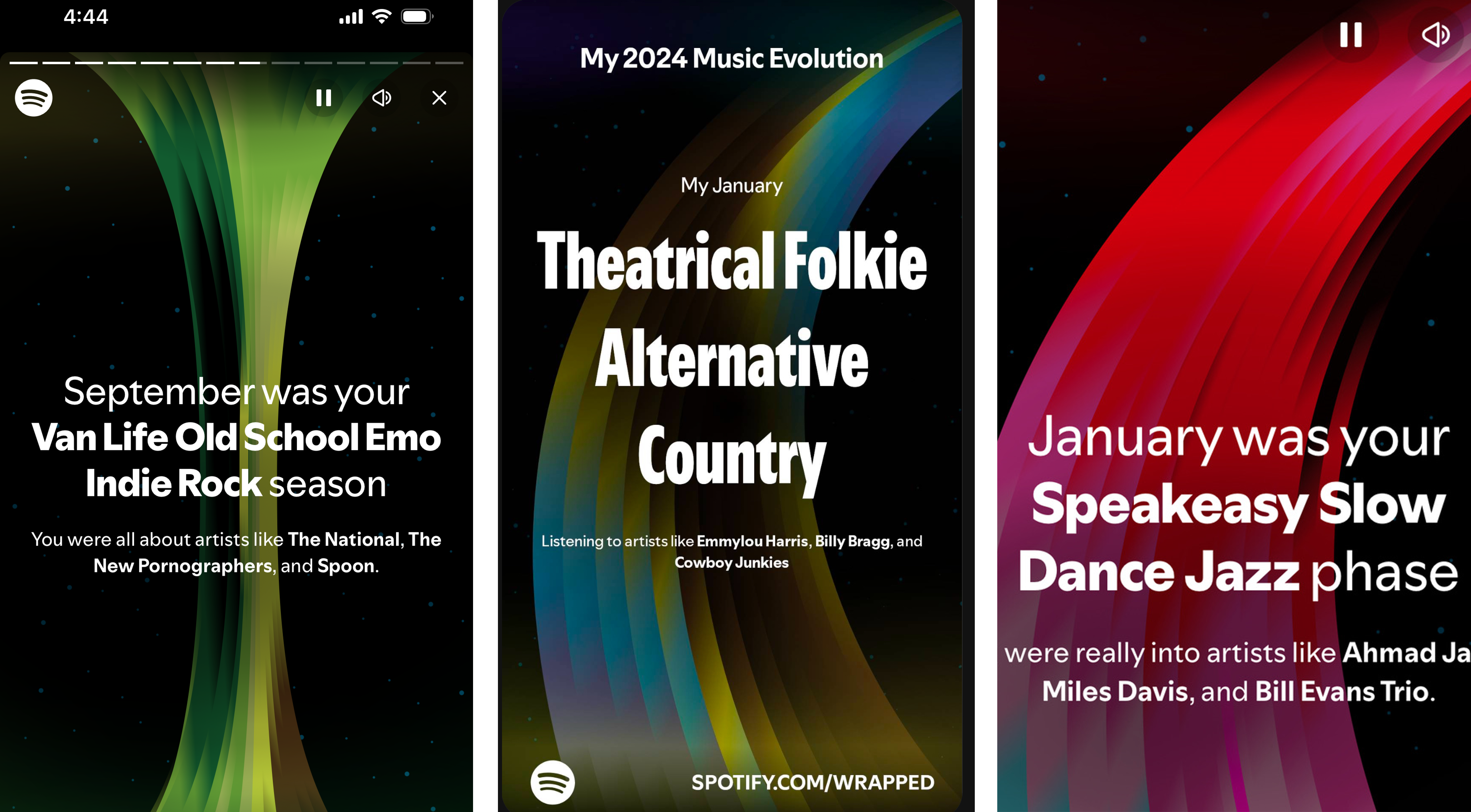
Rather than just showing what members listened to, perhaps there’s a certain level of judgment inherent in labels like these – like being called a “yuppie” or “hipster” or other psycho-socio labels.
The other “Wrapped” feature that may have gone off the musical rails is a “personal” AI podcast all about your listening, powered by Google NotebookLM. Chris Brunt covered this breakthrough feature in his AI newsletter in an edition called “Push Button, Make Podcast” a few months back, and I blogged about it as well in a post titled “Does the World Need AI Podcasts?” This podcast manufacturing technology is a phenomenon, especially for consumers who have not experienced it yet.
To hear your musical tastes over the last year reduced to podcast discussion form is certainly attention-getting. It is also a remarkable demonstration of AI technology, taking anything from books to research studies to a radio station’s annual budget and transforming it into a podcast featuring two congenial young people – male and female bots. In this case, they’re talking about your musical tastes and proclivities for the year.
How out of control is the “Wrapped” trend? Consider this: Last week, the New York Post revealed a New Jersey member of Congress apparently tried to fake his version of “Wrapped” to convince his constituents he is a Bruce Springsteen P1. Next to Bon Jovi, there’s no artist with more Baby Boomer cred than “The Boss” in Jersey.
Rep. Josh Gottheimer – a Democratic candidate for Governor of New Jersey – actually admitted he fudged a list of his five most listened-to songs on Spotify – all Springsteen songs. Here’s the fake graphic begging the question why he didn’t just use a Sharpie.
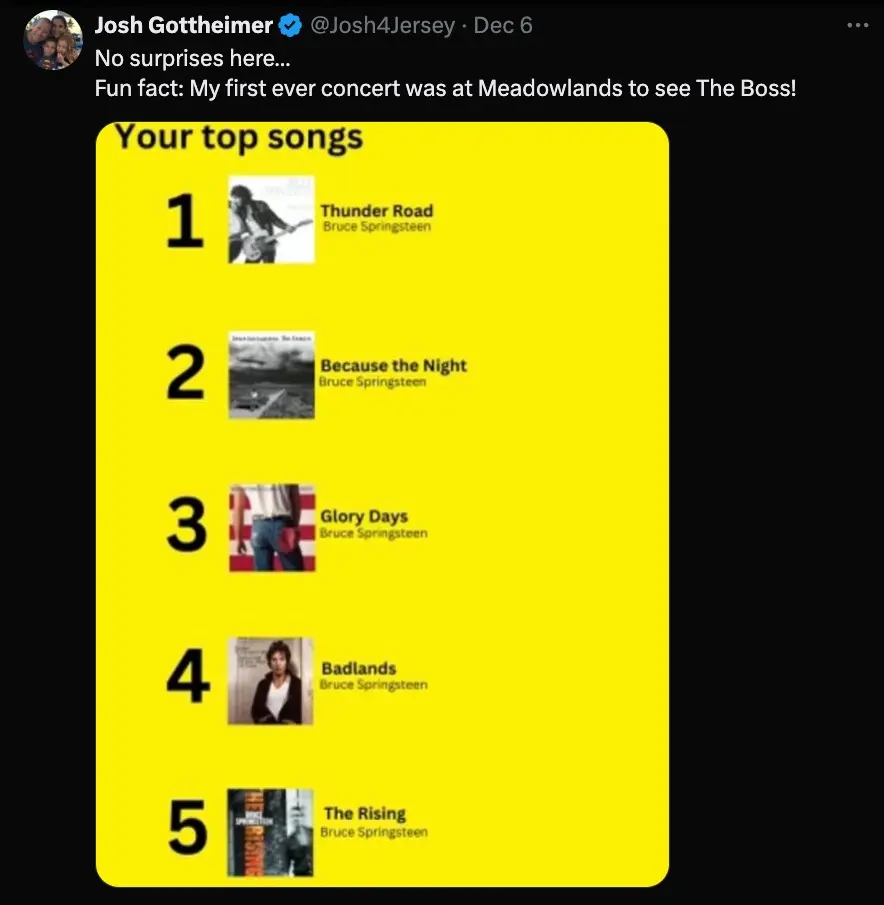
Of course, Gottheimer doubled down on his fakery, claiming his account’s algorithm has been tainted by his 12 and 15 year-olds whose musical choices screwed up his account’s “Wrapped” report. He noted, “It’s a joke to question my Springsteen creds, just ask my dog named Rosalita.”
I’m sure his ringtone is “Born in the U.S.A.”
There is a good side to Spotify’s “Wrapped” reports. Aside from the artists who receive them, podcasters also get their versions of these usage summaries.
Over the weekend, our friend Buzz Knight posted the “Wrapped” wrap-up for his podcast, “Takin’ A Walk,” which enjoyed a breakout year on the iHeart platform:
“Takin’ A Walk” is a wonderful podcast, providing warm and engaging conversations with music makers of all stripes. If you haven’t listened to it yet, you should. It’s a great example of how a radio thought leader transformed his skill set to create a highly successful podcast. The “Wrapped” summary for podcasters provides a helpful, insightful, and shareable way to spread your news. You can access Buzz’s podcast here or (as they say) “wherever you get your podcasts.”
Right about now, some of you may be wondering about my “Spotify Unwrapped.” And the truth is, I’m not a premium subscriber. And even if I was, my music listening is something like 90% focused on work – not my personal listening pleasure or tastes. Thus, you can’t classify my musical footprint.
But you can study my coffee habit. This past weekend, I received an email from Starbucks offering up my “2024 Starbucks Blend.”
That’s right – my morning coffee habit has been “datatized,” revealing my beverages and food items of choice, as well as how many Starbucks cafes I visited in 2024, and even when I tend to show up.
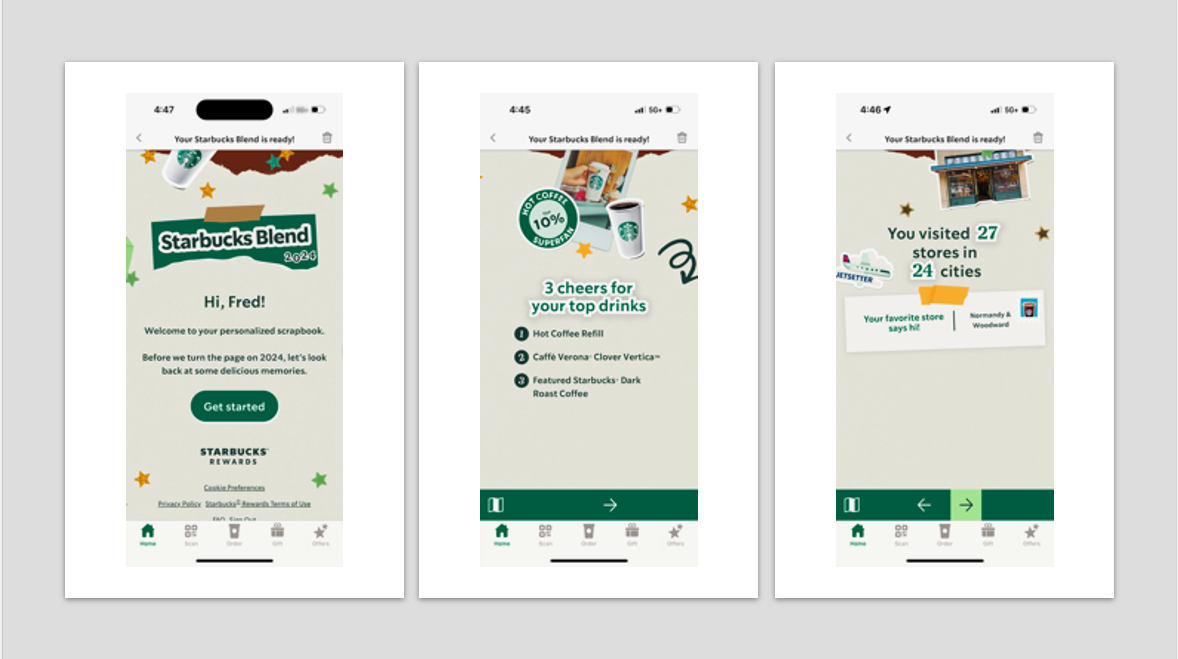
The report included all these eye-opening stats, while informing me I’m in the top .6% of “Star (points) earners.” What an accomplishment!
While brands like Starbucks want to jump on the “Wrapped” bandwagon, the middle panel above that shows my top drinks can be best summarized as:
COFFEE!
COFFEE!
COFFEE!
Not much evolution there.
It’s interesting how personal algorithmic stats are a game radio cannot play. Terrestrially, broadcast radio cannot compute how, when, and how much consumers personally listen to stations and shows. The ratings give us general information, but nowhere near the data granularity brands like Spotify or even Starbucks can mine. (Fortunately, sites like Pornhub haven’t started their own versions of “Wrapped” – at least yet.)
But all of these personalized, customized reports on what we’re listening to may be symptomatic of seismic changes happening in and around many entertainment platforms – like music festivals. Consultant, researcher, and thought leader Dave Van Dyke recently pointed out on Facebook how concert festivals cratered this year, despite the “experiential trend” most observers of the space acknowledge has been happening since the pandemic. Here was his recent post that elicited numerous theories about why this is:
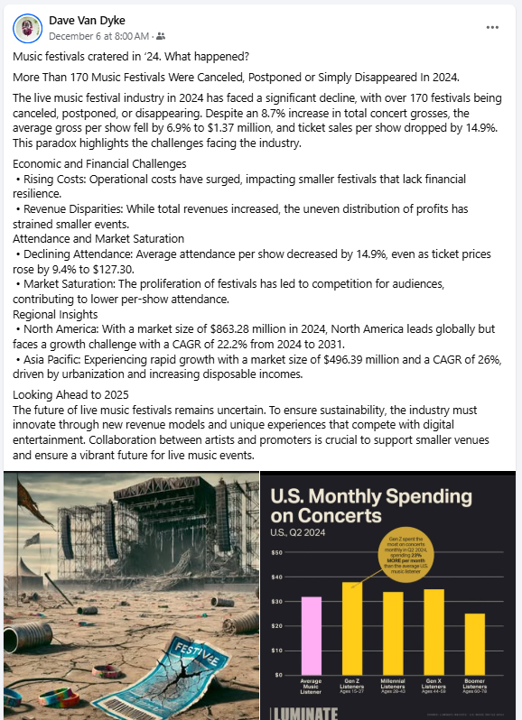
Some wonder whether Taylor Swift’s “Eras Tour,” which generated $2 billion in revenue, was the culprit that deep-sixed all these festivals. But hers was not the only concert tour that performed well in 2024. Others questioned whether there are simply too many festivals or pointed to a lack of uniqueness among these branded events. Still others speculated the general requirements around festivals – the time, the expense, the conditions – make it difficult for concertgoers to enjoy festivals. But the fact is, that’s what these events are all about, and they’ve certainly thrived in the past.
And then others pointed out a possible music problem – while older acts bring that nostalgia factor to festivals, there aren’t enough newer performers that people want to see. If that’s the case, could it be that today’s music and bands just aren’t as good as their predecessors?
That’s too easy an excuse, and one that I’ve heard for years. And it lacks truth and credibility. It is too easy to dismiss today’s music lower quality than the Classic Rock that exploded in the ’60s and ’70s, the MTV smash hits of the ’80s, or the moody Grunge of the ‘9os.
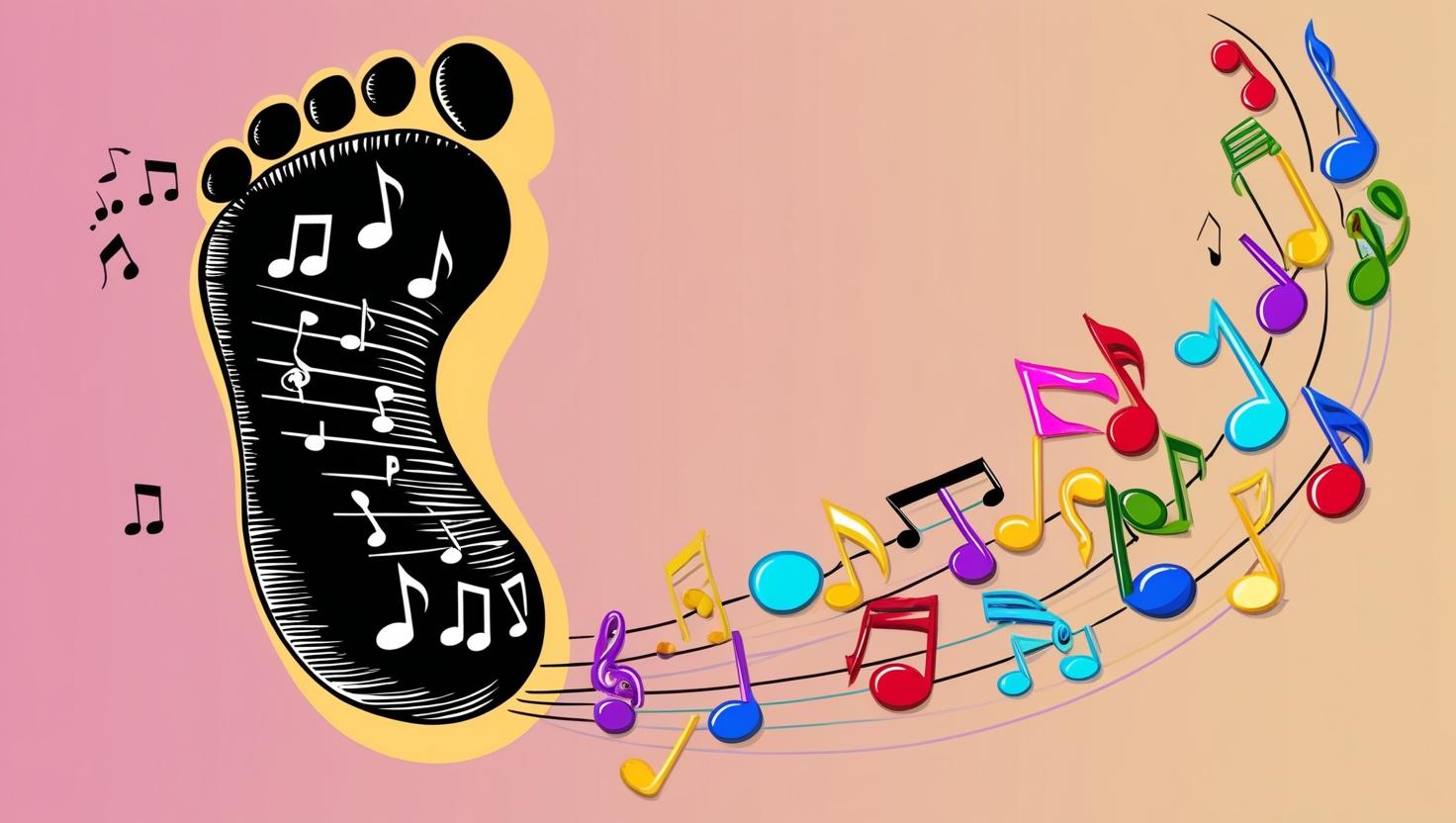 Maybe part of the issue is a lack of consensus hits caused at least in part by radio’s diminishment as a mass appeal discovery source. As consumers have drifted away from broadcast radio and ended up listening to streaming stations, playlist services, satellite radio, and YouTube, our musical identities became highly individualized. Hence, features like “Unwrapped” that celebrate personalized profiles, unique discovery, and other characteristics common to only small pockets of fans. None of this is unhealthy, and in fact, there’s a lot to be said for celebrating our own musical uniqueness, as different as our fingerprints.
Maybe part of the issue is a lack of consensus hits caused at least in part by radio’s diminishment as a mass appeal discovery source. As consumers have drifted away from broadcast radio and ended up listening to streaming stations, playlist services, satellite radio, and YouTube, our musical identities became highly individualized. Hence, features like “Unwrapped” that celebrate personalized profiles, unique discovery, and other characteristics common to only small pockets of fans. None of this is unhealthy, and in fact, there’s a lot to be said for celebrating our own musical uniqueness, as different as our fingerprints.
But the downside may be fewer and fewer communal gatherings around the new music of tomorrow. While we may nostalgically revel in the music of performers past whose music most of us discovered near simultaneously on the radio, it will be difficult for that phenomenon to repeat itself in the personalized playlist algorithmic environment we find ourselves in now. There will still be superstars but likely nowhere as mass appeal as Swift, Beyoncé, and the diminishing handfuls of hit makers like we have celebrated in stadiums and multi-day festivals from year and decades past.
Instead, our present and future may be measured for each individual user a la Spotify, enhanced by AI parlor tricks, like we’ve seen in this newest version of “Wrapped.” What was once a fascinating glimpse behind our annual consumption is now turning into an odd translation of our music profiles by bots that have minds – and tastes – of their own, able to process hundreds of millions of profiles in increasingly efficient hours.
Will we continue to provide permissions to Spotify, blindly checking the “terms and conditions” box, and allowing them to define and categorize our music tastes? Will we look for personal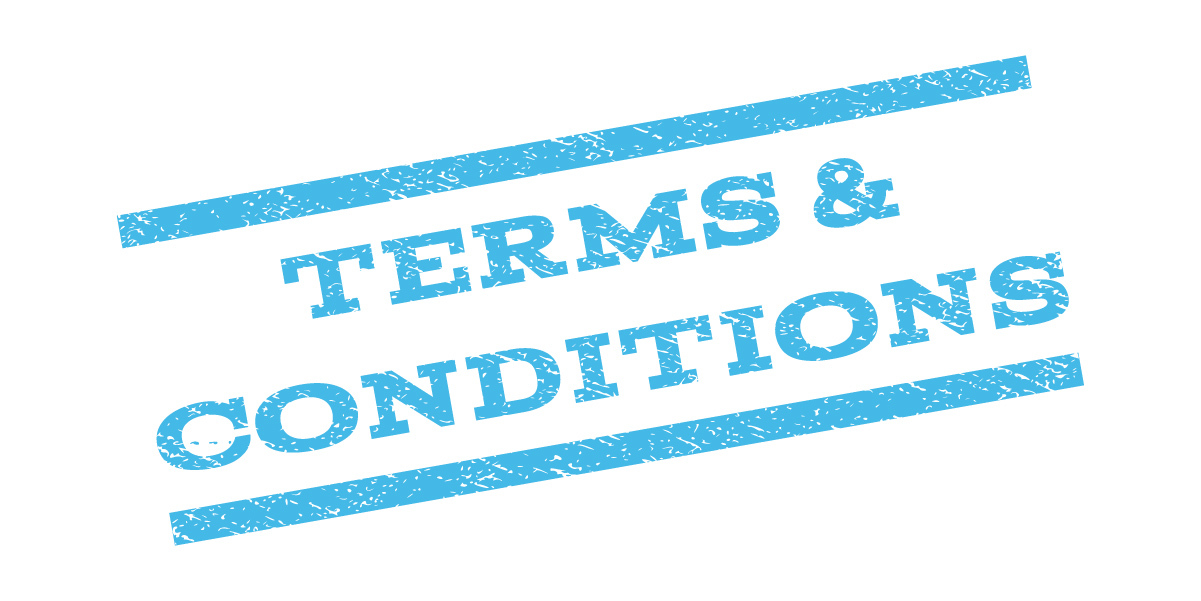 discovery tools more reminiscent of the old school ways we found out about new artists and their music “back in the day? Will the proliferation of personalized consumptions engines that classify our music, our beverage intake, our social media activity, and even the op-ed columns we read begin to get on our nerves, creep us out, or remind us just how disturbing it is the bots know so much about us?
discovery tools more reminiscent of the old school ways we found out about new artists and their music “back in the day? Will the proliferation of personalized consumptions engines that classify our music, our beverage intake, our social media activity, and even the op-ed columns we read begin to get on our nerves, creep us out, or remind us just how disturbing it is the bots know so much about us?
These trends are part of the AI applications and implications we’ll be studying at CES 2025 next month in Las Vegas. I am beginning to believe this year’s show may be less about gadgetry and more about high level applications of technology in our personal and our professional lives. At the end of CES week most years, our feet hurt. This year, I wouldn’t be surprised if our brains ache a bit, too, as we attempt to process high-level thinking about media and technology.
Most of us aren’t listening to music in the same old ways, watching sports how we used to, or enjoying movies and televisions in traditional ways.
Right before our very eyes, our interactions with media are undergoing tectonic shifts.
What a trip.
Join our CES 2025 tour – there are still a couple slots left. Info/registration here.
- For Radio, Where Does Digital Revenue Go From Here? - June 6, 2025
- “My Favorite Decade Of Music Is The __’s” - June 5, 2025
- Who’s Got It Better? Talent In Commercial Radio vs. Talent in Christian Music Radio - June 4, 2025




Leave a Reply